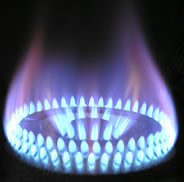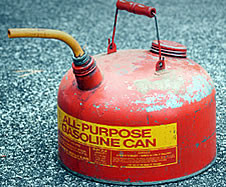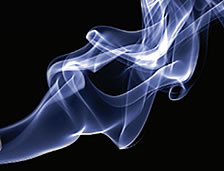Fire Risk Analysis is an integral component of maintaining a safe environment, whether residential, commercial, or industrial settings. This systematic process seeks to identify potential fire hazards, assess their risks of harming individuals or property, and implement suitable controls in order to eliminate or mitigate such threats. Implementation and comprehension of thorough Fire Risk Assessment processes are paramount components in assuring fire safety.
Step 1: Identify hazards
The first step in the fire risk assessment process is to identify potential fire hazards. This involves recognizing all possible sources of ignition, types of fuel, and oxygen sources.Sources of ignition could be anything that can generate heat or a spark capable of starting a fire. These can range from electrical equipment, heaters, and smoking materials to more specialized items such as welding equipment or certain chemical reactions.
Fuel sources include anything that can burn. Typical examples in a workplace might include furniture, paper, chemicals, waste materials, or flammable gases and liquids.
Oxygen is present in the air around us but can also be introduced through certain chemicals or oxygen supplies used for medical or industrial purposes.
Step 2: Identify people at risk
Next, identify who might be at risk in case of a fire. This should include all those present, but special consideration should be paid to the elderly, disabled individuals and children, as well as employees working alone with hazardous materials or substances.Step 3: Evaluate, remove, reduce, and protect from risk
In this step, the risk associated with each hazard identified is evaluated, and measures are decided upon to remove, reduce, or protect from these risks.This might involve measures to prevent ignition sources and fuel from coming into contact with one another, ensuring appropriate storage and handling of flammable materials, maintaining equipment to prevent overheating or sparks, or implementing no-smoking policies. Protection measures include ensuring appropriate fire detection and warning systems are in place, providing adequate means of escape, and ensuring those exits remain clear and accessible at all times.
Step 4: Record, plan, inform, instruct, and train
Document all the findings and measures taken, and prepare an emergency plan. Inform and instruct relevant people, provide training, and appoint a sufficient number of competent persons to implement safety measures in the event of a fire.Step 5: Review
Finally, maintain an up-to-date assessment by regularly reviewing it to make sure it remains valid, for instance, when changes to premises or personnel occur or there are indicators suggesting its validity is no longer current.In conclusion, fire risk assessment is an integral element of safety. By identifying potential hazards early and mitigating them accordingly, this systematic process ensures everyone in a building or space stays safe from fire hazards and creates an overall safer environment. By adhering to it regularly and properly, you can significantly decrease fire incidents while creating a more secure environment for all.
Identifying and Evaluating Fire Hazards
Identification and evaluation of fire hazards is a fundamental element of fire risk analysis. Through this stage, potential risks are discovered, assessed for their potential impact, and prioritized for risk management action.
Identifying fire hazards
Fire hazards include any situation, material, or condition that poses the threat of fire or explosion or can exacerbate existing ones. Heat, fuel, and oxygen are essential ingredients for fire; when looking for potential fire hazards, we need to identify situations where all three components could come together and form what is known as the "fire triangle."
Heat sources: These can be both obvious and hidden. Obvious sources include open flames, heating appliances, and electrical equipment. Hidden sources could be friction within machinery, overheated materials, or electrical shorts.

Fuel sources: These include any material which is both flammable and combustible, such as waste paper, wood shavings or textiles that could catch fire easily; to more hazardous substances like gasoline, propane or certain forms of chemicals which pose more of a danger.

Oxygen sources: While oxygen is present in the air around us, additional sources that can intensify a fire include oxygen cylinders or chemicals that release oxygen when heated.
Evaluating fire hazards
Once potential fire hazards have been identified, the next step should be assessing them - both their likelihood and severity of causing fires are key aspects to consider when doing this.- Likelihood of fire: The likelihood of fire depends on various factors. These can include its proximity to sources of ignition, frequency of its presence, and whether controls exist to protect against it.
- Severity: Assessing the severity of fire damage requires considering many variables, including potential for spread, number of affected people and injuries or fatalities as well as property damages that could occur.
The process of evaluating fire hazards allows for informed decision-making about which hazards pose the greatest risk and therefore, should be addressed first when it comes to implementing controls.
Identification and evaluation of fire hazards is a core component of fire risk management and requires knowledge of fire components as well as being able to recognize possible sources for potential fire outbreaks in the workplace and assess likelihood and impact.
By accurately identifying and evaluating these fire hazards, effective preventive and protective measures can be put into place that reduce risks related to incidents occurring.
More.........
- Learning from Fire Incidents: Case Studies
- Post-Fire Recovery and Investigation
- Fire Safety in Healthcare and Educational Institutions
- Fire Emergency Communication and Coordination
- Fire Safety Compliance and Enforcement
- Fire Risk Assessment Process
- Fire Safety Inspections and Audits
- Fire Safety Systems Integration
- Fire Suppression Systems and Equipment
- Fire Safety in Industrial and Manufacturing Facilities
- International Fire Safety Codes and Practices
- Fire Safety Measures in High-Rise Buildings
- Emergency Evacuation Planning
- Fire Detection and Alarm Systems
- Fire Investigation Techniques and Procedures
- Firefighting Techniques and Equipment
- Fire Safety Planning and Documentation
- Fire Risk Management Strategies
- Fire Safety Legislation
- Fire Prevention Strategies
- Evacuation Techniques and Strategies
- Fire Safety Roles and Responsibilities
- Emergency Response Planning and Procedures
- The Importance of Fire Safety
- Building Construction and Fire Resistance
- Importance of Fire Safety Training
- Fire Safety in Offices and Administrative Buildings
- Fire Safety in Warehouses and Storage Facilities
- Fire Safety Regulations and Standards
- Fire Science and Behavior
